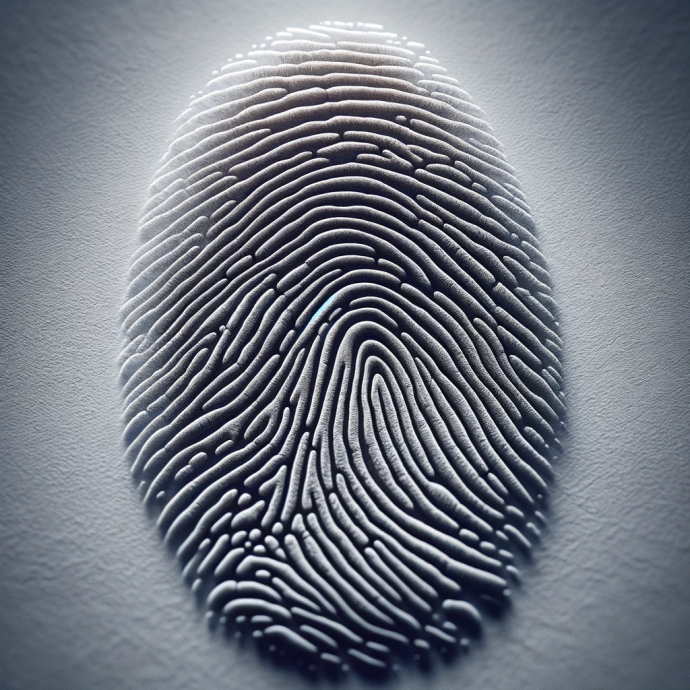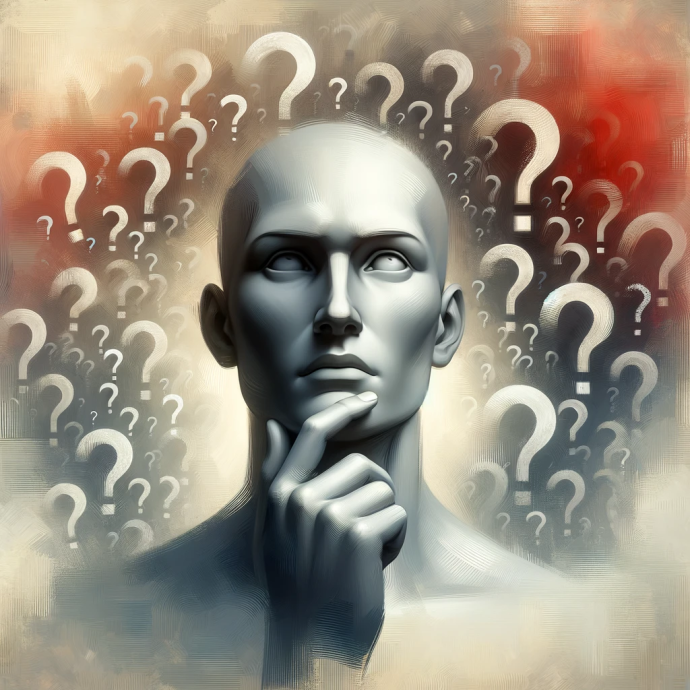Our Fingerprints May Not Be Unique, Claims AI

Our fingerprints, those specific identifiers we’ve depended on for safety and forensic functions, might not be as singular as we idea, consistent with a compelling study from Columbia University. This revelation, delivered forth by means of an AI tool, is challenging our traditional know-how of fingerprint distinctiveness, a belief deeply rooted in both forensic technological know-how and personal protection.
For a long time, fingerprints had been a cornerstone in criminal investigations and private identity verification. This premise is built on the notion that every fingerprint, even those on the identical hand, is different to an character. However, Columbia University's research is turning this perception on its head.
Revolutionary Research of Columbia University
The studies group, led by means of Prof Hod Lipson, a renowned roboticist at Columbia University, embarked on an formidable venture. They skilled an AI tool to scrutinize an intensive database of 60,000 fingerprints. The objective become clean but daunting: decide if the AI could accurately discover which prints belonged to the same man or woman, even if they were from extraordinary hands.
The outcomes have been startling. The AI established a super accuracy charge of 75-90% in matching prints from specific fingers to the identical individual. This degree of precision, whilst not absolute, poses widespread questions on our lengthy-status ideals regarding fingerprint strong point.
But the thriller deepens. The workings of the AI tool continue to be in large part enigmatic. “We don’t understand for sure how the AI does it,” Prof Lipson admitted. This uncertainty isn't unusual within the realm of AI, where the complexity of algorithms often veils the exact methods worried.
The researchers speculate that the AI device is probably reading fingerprints in a different way from conventional techniques. Typically, forensic experts attention on trivia — the specific patterns in which ridges in a fingerprint quit or break up. The AI, but, seems to be examining other aspects, consisting of the orientation and curvature of ridges, specially inside the important swirls of the fingerprints.
This discovery changed into as sudden to the researchers because it might be to us. Prof Lipson and Gabe Guo, an undergraduate student involved in the observe, approached their findings with a healthy dose of skepticism. “We were very skeptical… We had to test and double-check,” Prof Lipson shared, highlighting the rigor and warning inherent in their research.
Scepticism Is Echoed Inside the Broader Forensic Network

Graham Williams, a professor of forensic technology at Hull University, noted that the distinctiveness of fingerprints has by no means been conclusively tested. “We don’t simply recognize that fingerprints are particular,” he said. “All we are able to say is that as some distance as we are conscious, no human beings have not begun to illustrate the same fingerprints.”
The implications of Columbia University's study are great and varied. In biometrics, as an instance, wherein a unmarried finger is regularly used for unlocking gadgets or identity, this studies could herald a good sized shift. Forensically, the potential to connect exclusive fingerprints from the equal individual throughout numerous crime scenes will be groundbreaking.
The Adventure Is a Long Way From Over
The Columbia crew, none of whom concentrate on forensic science, recognizes the need for similarly research. AI equipment require enormous amounts of information for education, and the fingerprints used in this study had been all entire and of high satisfactory. In real-international situations, partial or degraded prints are extra not unusual, providing extra challenges.
The practical packages of this technology in criminal and forensic contexts are nonetheless in their infancy. “Our device isn't always correct sufficient for determining proof in court docket instances but it is ideal for generating leads in forensics investigations,” Mr. Guo said, underlining the current boundaries of their findings.
Dr. Sarah Fieldhouse, an companion professor of forensic technology at Staffordshire University, additionally expressed caution regarding the on the spot impact of this take a look at on criminal casework. She talked about uncertainties around the permanence and reliability of these new markers recognized via the AI. Traditional markers in fingerprints, like trivia, are regarded to stay consistent over a person's lifetime. However, it is doubtful if the equal may be stated for the traits the AI is that specialize in, which includes the curvature and orientation of ridges. These factors could probably exchange relying on how the pores and skin twists upon contact with a surface.
Furthermore, the enigmatic nature of AI choice-making provides every other layer of complexity. As with many AI-driven gear, the precise process via which the AI reaches its conclusions is not fully understood, even with the aid of the researchers themselves. This lack of transparency is a not unusual challenge in the area of synthetic intelligence and increases questions about the reliability and interpretability of AI findings in excessive-stakes applications like forensic analysis.
New Avenues for Research

Despite these uncertainties, the study, which has gone through peer assessment and is set to be published within the renowned magazine Science Advances, represents a sizable development in our knowledge of fingerprint analysis. It opens up new avenues for research and debate inside the forensic technological know-how network.
Interestingly, an anecdotal piece of evidence from a pair of twins in Cheshire provides a charming twist to the discussion. Their grandmother, Carol, shared with the BBC that the twins can unlock each other's iPhones the usage of their fingerprints, and even skip the facial reputation function. This shows that there may be extra similarities in fingerprints amongst closely related people than formerly notion.
The examine additionally touches on broader medical questions on the formation of fingerprints. Research published remaining 12 months hinted that the genetic process at the back of fingerprint formation is probably similar to how animals like zebras and leopards expand their distinct markings. This concept, first proposed via the legendary codebreaker Alan Turing in the 1950s, suggests a complex interaction of genetic and environmental factors in the improvement of those specific patterns.
As we delve deeper into the mysteries of fingerprints, it's clear that we're status on the precipice of a capacity paradigm shift in our knowledge of these intricate markers of identity. The Columbia University observe not best demanding situations long-status ideals but additionally invitations us to rethink the methods we use fingerprints in the entirety from criminal investigations to non-public security.
While the AI tool evolved by using the Columbia group isn't always but prepared for software in criminal settings or forensic casework, it truely opens the door for in addition research and improvement. With improvements in AI and a deeper know-how of fingerprint evaluation, we may soon discover ourselves redefining what we thought become really particular.
In conclusion,
This groundbreaking study serves as a testomony to the ever-evolving nature of science and era. As we keep to discover and recognize the sector round us, it is clear that even the maximum mounted truths are difficulty to reexamination and reinterpretation within the mild of new proof and progressive methodologies. The journey of discovery is ongoing, and the fingerprints take a look at at Columbia University marks an thrilling and notion-provoking step along the way.

Become a part of digital history






Comments about Our Fingerprints May Not Be Unique, Claims AI